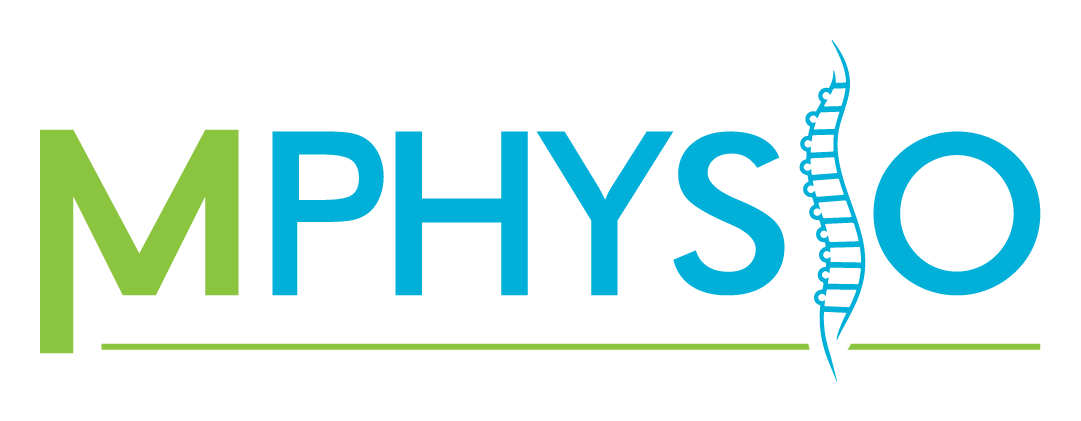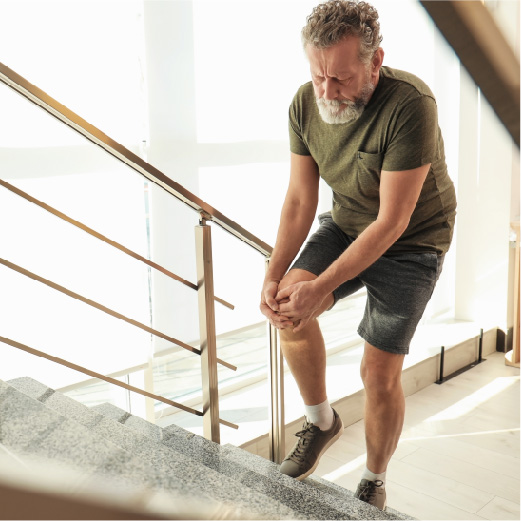
Patellofemoral Pain Syndrome
The patellofemoral joint is at the front of the knee joint. It’s important in how we walk and allows us to effectively straighten our legs.
The position of the patella (our kneecap) is dependent on muscle balance and the alignment of your leg. When this muscle balance isn’t correct for the patello-femoral joint, it can cause a sore leg and knee pain when we take part in certain activities.
Meniscal Tears
There are two main types of cartilage in the knee joint. Articular cartilage covers the joint surfaces of the femur and the tibia. This is designed to protect the bony surfaces in the joint and to help with joint movement.
Meniscal cartilage forms rings in the medial and lateral compartments of the knee joint. It is designed to act as a shock absorber when we put weight through our knees. Damage to the meniscal cartilage can cause pain, decreased range of movement or a locked knee.
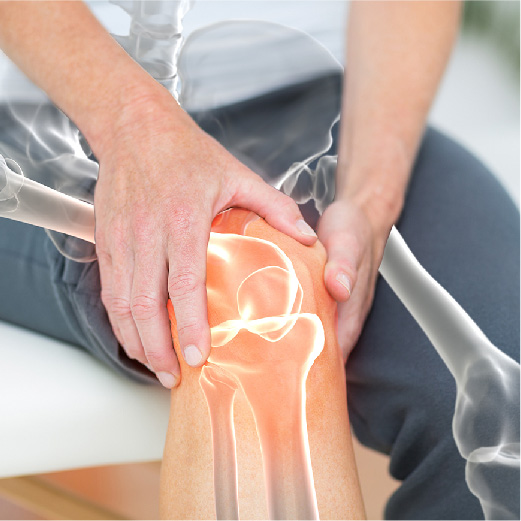
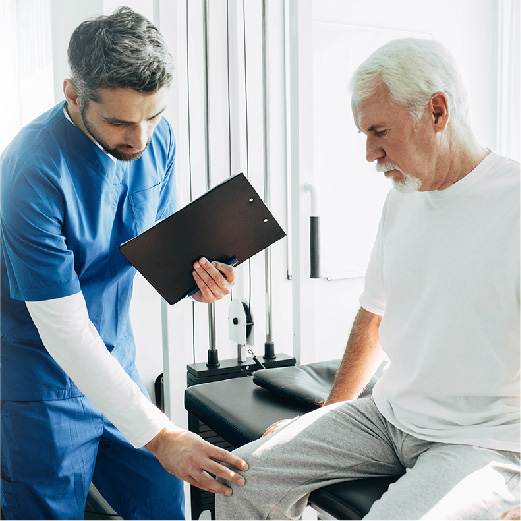
Ligament Tears of the Knee
Your knee is very mobile when moving forward and backward. However, it is not designed to move from side-to-side. In order to help prevent these types of movements, the medial and lateral collateral ligaments provide support to the inside and outside of the knee joint.
To prevent the tibia (shin bone) moving forward or backward during movement, the anterior cruciate ligament (ACL) and posterior cruciate ligament (PCL) provide support from inside the knee joint. Excess force in the wrong direction can strain or tear these ligaments, resulting in pain or instability at the knee.
Targeted Exercises for Knee Pain
At M Physio, we understand that no two cases of knee pain are the same. That’s why we don’t believe in a one-size-fits-all approach to exercise therapy. Our physiotherapists create individualised treatment plans that can include specific targeted exercises designed to improve joint function, reduce pain and support long-term recovery.
Some commonly prescribed knee strengthening exercises:
Straight Leg Raises: Often used to build quadricep strength without placing stress on the knee joint, this exercise involves slowly lifting your extended leg off the floor while lying on your back. Your physio will show you the correct starting position and progression, such as the use of ankle weights.
Seated Knee Extensions: This simple but effective exercise can help restore strength in the thigh muscles. Your knee physiotherapist will advise whether this movement is appropriate and how many repetitions are safe for your injured leg.
Hamstring and Calf Stretches: A gentle stretch to the hamstring muscles and calf muscles can increase flexibility and reduce stress on the knee cap. These stretches must be performed correctly to avoid irritation or further injury—we’ll guide you through each one.
Wall Squats and Half Squats: These exercises may be used to improve joint stability and build strength in the hip and thigh muscles. At M Physio, we’ll ensure you maintain the right technique—such as keeping your feet flat, shoulder width apart, and avoiding leaning forward.
Every exercise is prescribed with your current pain level, mobility and recovery timeline in mind. It’s important to consult our team before beginning or modifying any routine—doing the wrong movement could delay healing or worsen symptoms.
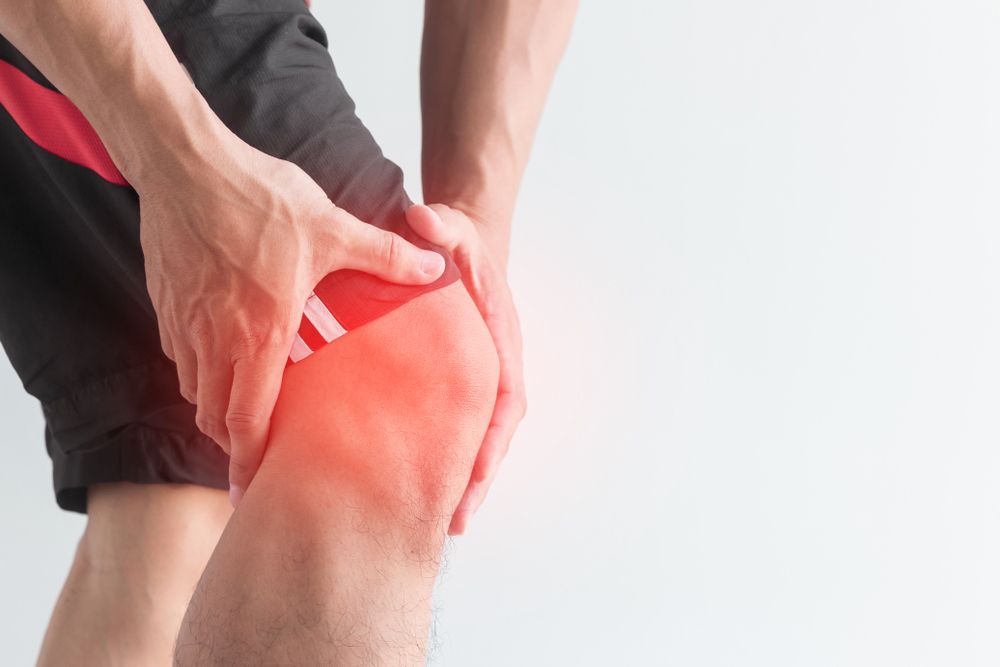
Pain Relief and Home Care Tips for Knee Conditions
While your exercise program is central to recovery, there are a number of self-care habits that can support your progress—but it’s critical to follow advice from your knee physiotherapist at M Physio, as each patient’s needs are different.
Here are some general strategies your knee physio might recommend as part of your plan:
- Wear Supportive Footwear: Proper shoes help align your pelvic bones, knees and ankles, reducing unnecessary strain. Your physio may assess your gait and recommend footwear or orthotics suited to your condition.
- Apply Ice or Heat (as directed): Some knee issues benefit from ice to reduce inflammation; others from warmth to relax tight muscles supporting the joint. Your knee physiotherapist will advise which is appropriate for your injured knee.
- Stay Gently Active: Under your physio’s guidance, low-impact movement may help reduce stiffness. Stretching, gently pulling the leg muscles or performing light leg extensions might be recommended depending on your condition.
- Focus on Technique: Your physiotherapist will coach you on safe movement patterns—such as avoiding excessive leaning forward, maintaining shoulder-width stance during exercises, and engaging your upper body for support.
Every element of your care plan, including these supportive measures, should be prescribed by your M Physio practitioner. Don’t self-prescribe or follow generic advice online—what works for one person may not be suitable for another.
Safe Movement Techniques and Posture During Rehab
Good technique is essential to avoid strain and get the most benefit from your physio-led exercise program. At M Physio, we guide every movement to protect your joints and ensure long-term success.
Here are some posture and form principles we commonly include:
- Keep feet flat and shoulder-width apart during exercises like squats, bridges, or wall sits to maintain balance and prevent excessive pressure on the knees.
- Engage the quadriceps and hamstring muscles with safe strengthening exercises using proper form—your legs should be straight or slightly bent, depending on the movement prescribed.
- Perform balance drills on one leg to activate stabilising muscles, always with guidance from your therapist.
- Stretch gently and never force the range. When instructed, you may be told to gently pull the leg toward you during a quadriceps stretch or a hamstring stretch, depending on your condition and flexibility.
Your therapist will show you the starting position for each movement, monitor alignment and adjust your plan to match your progress. Never perform these exercises without professional guidance—we’re here to make sure every step is safe and effective.
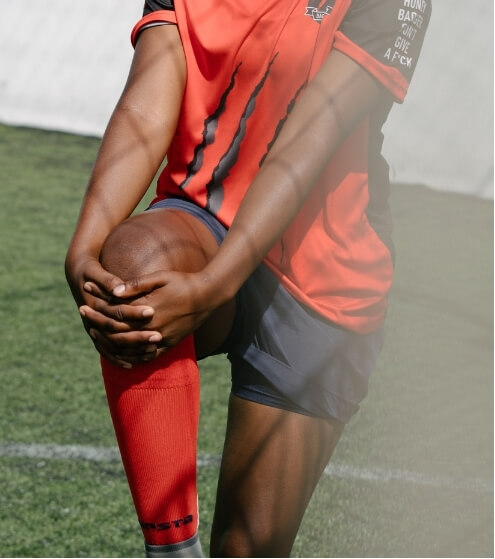
Physio For Knee Pain - FAQ
Do I need a scan for my knee pain?
You may need a scan if you experienced your knee injury through some form of trauma or sporting injury. This scan will be to determine if there has been damage to any important ligaments or the cartilage inside your knee. Our experienced knee physiotherapists will be able to guide you on whether this is appropriate and can help you to organise a referral. In a large majority of cases, scans are not required as a thorough physical assessment can tell us a lot about the condition of your knee.
Will my knee pain get better?
In most cases, yes. Injuries to the knee are often very treatable with physiotherapy. Your physiotherapist will be able to assess your knee to determine the true cause of your knee pain, and then will come up with a treatment plan specifically designed to alleviate pain. Most knee injuries should improve within 12 weeks with the correct treatment plan, but your physiotherapist will be able to give you a more specific timeline for your injury. Some sports or traumatic injuries may require surgical intervention, depending on your presentation, but your physiotherapist will guide on whether this is required or not.
What are the best knee physio exercises for a sore knee?
There’s no universal answer—the best exercises for knee pain depend entirely on your diagnosis. At M Physio, we might prescribe movements like straight leg raises, seated knee extensions, or calf stretches as part of a structured plan, but only after a full assessment by one of our qualified physiotherapists.
Can I do exercises if only one knee hurts?
Yes—but only under guidance. Even if only one knee is affected, strengthening the other leg, hip muscles, and core will often be part of your program. Your Physiotherapist will ensure the exercises you do don’t place excess load on the injured leg or surrounding structures.
Is physical therapy still effective without a scan?
In most cases, yes. Our physiotherapists are highly trained in physical assessment and can often identify the root cause of your symptoms without imaging. If we believe a scan is necessary, we’ll help arrange a referral.
How can I prevent future knee injuries?
Ongoing physiotherapy, correct technique and a strong foundation of targeted exercises are key. Undergoing physio for knee pain will help you build strength in the quadriceps, hamstrings and calf muscles, support your knee cap, and improve movement patterns to reduce the risk of future injuries.
